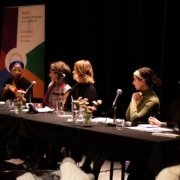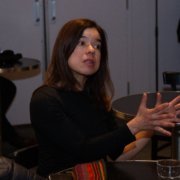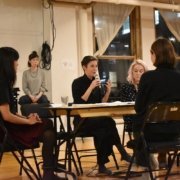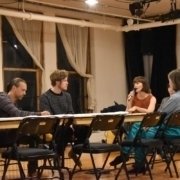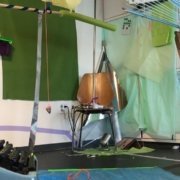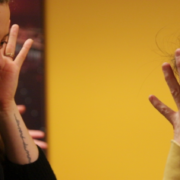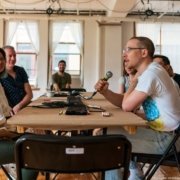Discovering and Playing with Fascial Topologies: Workshop Summary
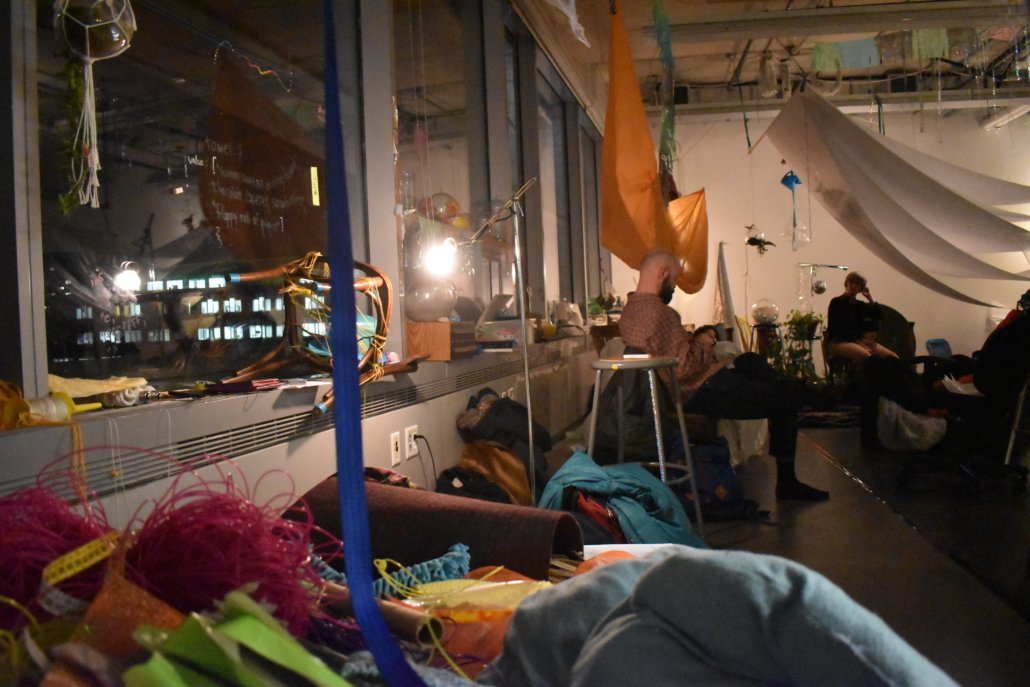 Photo by Lital Khaikin.
Photo by Lital Khaikin.
“What institutionally sanctioned therapies fail to critically engage with, is the political operation of how the brain becomes subject. Perhaps unconsciously, or perhaps out of willful blindness, the dominant medical strategies in place for treating depression uncritically lend themselves to the neoliberal free marketeering of life – the transformation of life into capital. They each assist this transformation by creating brain chemistries or thought patterns that facilitate the maintenance, or even enhancement, of one’s “human capital.”
The Neuroplastic Paradox, Adam Szymanski, published in inflexions: Modes of Exhaustion.
Where our Performative Discussion on “burnout” ended on the question, what gives you life, our Fascial Topologies workshop continued the exploration of what is livable?
The Fascial Topologies workshop was based on the idea of the schiz (cut or interval)—a term borrowed from process philosophy—as a place to begin exploration into the body’s connective tissue. We are often aware of mental stress or overburden, and push our limits in suppressing these realities within our bodies. The workshop presented exercises for listening to the body’s zones of exhaustion. So where do we find the schiz in Fascial Topologies?
Discovering fascia
Hosted at Senselab, a space for creative research and play, Fascial Topologies was inspired by the lab’s Schizo-somatic workshop series. Participants discovered a space for curiosity that can be constantly reinvented by the people present in the room. Everything can be placed elsewhere, nothing is displaced. Object sculptures and textile installations made up a collage of rock, paper, plant, plastic, tissue, gauze, silk—a microcosm of the materials that we encounter every day.
With an interdisciplinary background in performance arts and body alignment practice, Csenge Kolozsvari guided participants through simple exercises to feel and explore their bodies’ connective tissues. Csenge spoke about how Western science has begun to develop a deeper understanding of fascia, after historically dismissing the importance of the body’s connective tissue and seeing it as separate from other bodily systems. The lymphatic system and nerves are now understood to connect, wrap around each muscle fibre, even bypass bones to connect one fascial plane to the next. Non-Western science and practices have long appreciated the role of connective tissue not only in a strictly medical sense, but also within a broader understanding of humanity’s place and responsibility within interconnected networks of beings, objects and environments.
Fascial Topologies introduced the idea of sensing ourselves in a deeper connection with the spaces we inhabit, and the bodies with whom we share that space. Our bodies and experiences are shaped by dominant narratives that limit our sensations and understandings: our mind is limited to the brain, our personhood ends at the edges of our bodies, places begin outside of us, we are something ‘other’ than a place.
The Fascial Topologies workshop posed a few challenges: exploring unscripted ways of moving around a space, remembering the feeling of remote objects, confronting silliness and absurdity. Such practices are especially important for artists in that they strengthen visualization, memory, and open space for deeper empathy, not only for human bodies, but also for objects and environments.
The workshop guided participants through sensing exhaustion as something that can stagnate within connective tissue, but also move through the body. Participants considered the questions: Through what processes, under what conditions, does exhaustion move through the body? How do we think and act differently under those conditions? What forms of physical and emotional architecture in our lives allow for different modes of being?
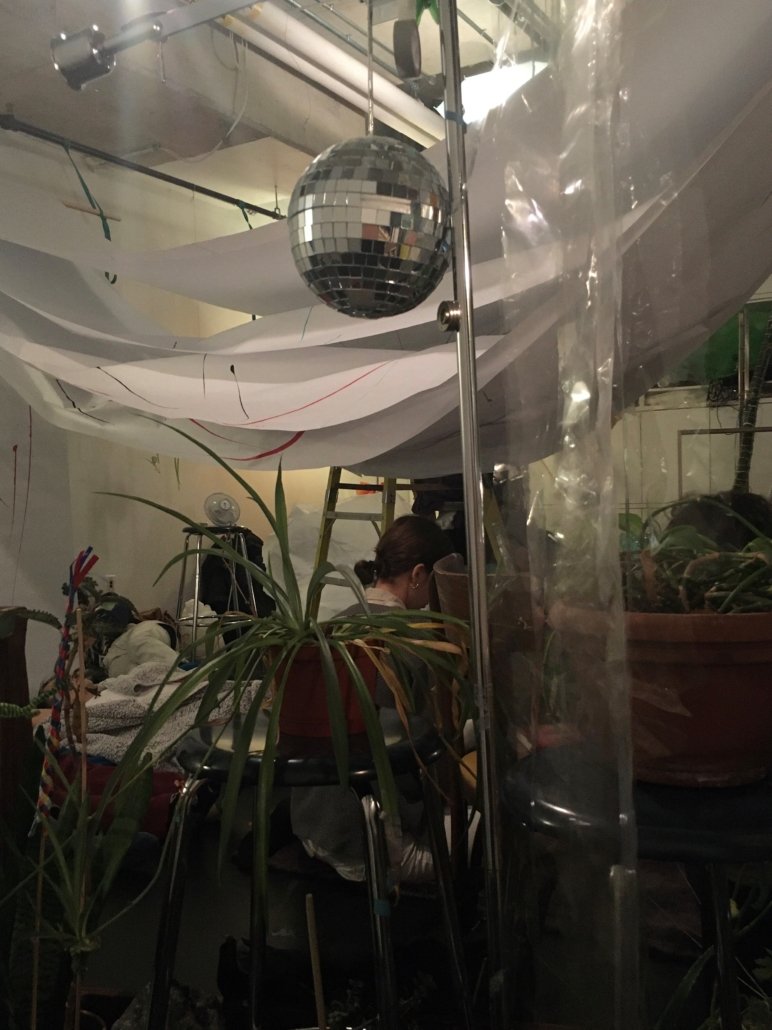
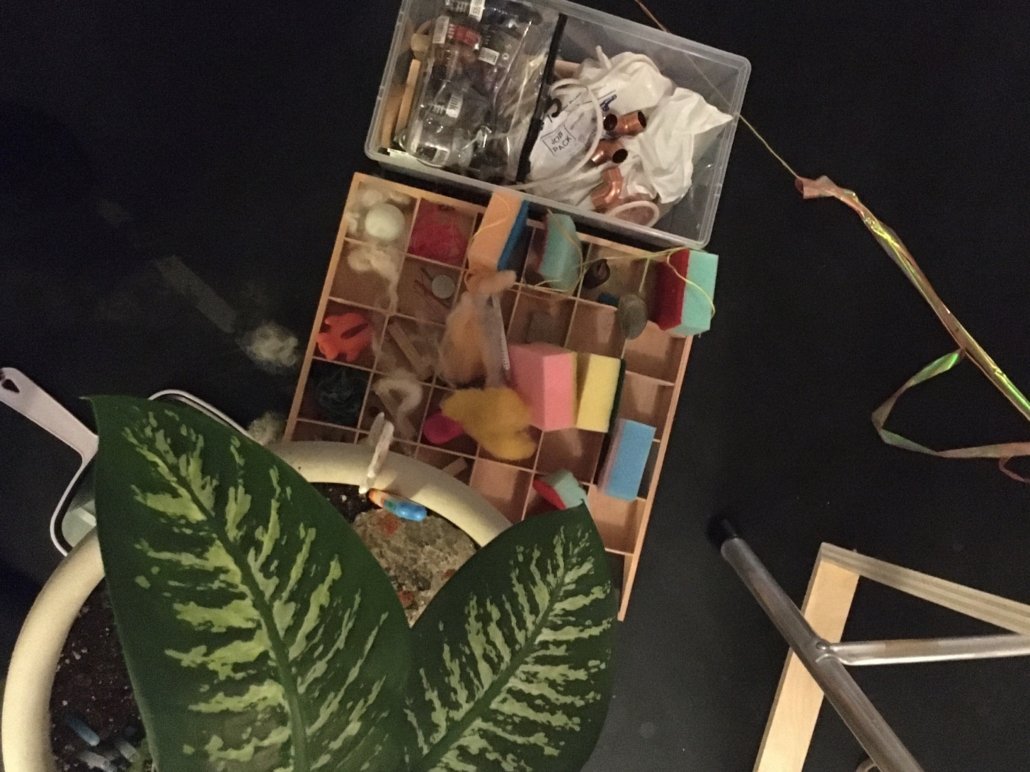
Photos by Emily Enhorning.
Holding space
Csenge Kolozsvari then guided Fascial Topologies participants through an exercise on visualization and muscle memory, attuning participants to the ways invisible stimuli move our bodies. The exercise asked participants to move around the space while feeling the imprint of the walls and materials touched. This visualization acts like a form of stretching that develops the physical memory of the environment, while attuning to the ways the body carries emotional memory or tensions. If we let ourselves be in a space, and feel connected to the edges of that space, can this be a form of massage?
Participants noted that this experiment can also be translated into an intentional practice of being with and moving through emotions. The body knows what it needs, but we’ve constructed systems that isolate us from our own sensations. The question then becomes, What is centred? What takes priority? How much do we rely on particular senses to determine our experience and meaning in the world?
Neoliberal self-care narratives put the onus on the individual artist to just “be less stressed”, to uplift themselves by optimizing their productivity and performed selves for the market. Solutions for exhaustion focus on internalizing—rest can become stagnation, retreat can become isolation, and looking inwards can turn into separation from the external world. When we are exhausted, we often are not truly ‘with’ our bodies, instead perceiving pain and exhaustion as isolated experiences, rather than deeply connected and interfacing with our environments. In this way, we get stuck at our thresholds—caught in the schiz.
But when isolating ourselves in this way, what world do we shut out? What if we were to observe how these locations interact with other areas of ourselves, and how they are affected, and affect, our environments?
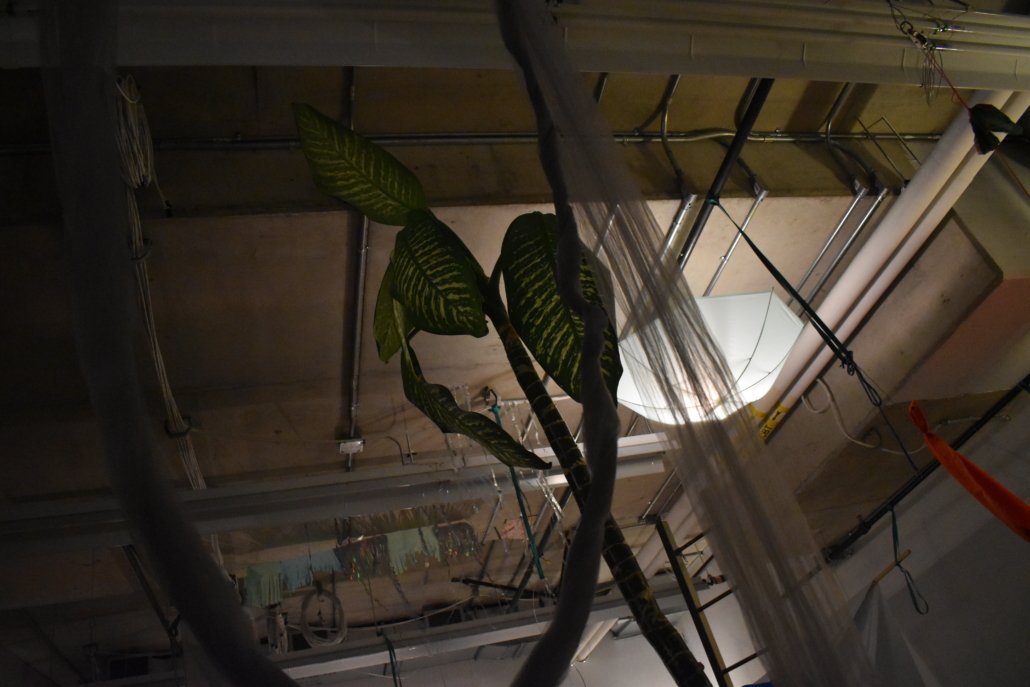
Photo by Lital Khaikin.
By practicing intentional touch, nerve endings in the hands and feet become stimulated, the familiar feels different. Areas that are usually neglected or taken for granted become activated and sensitive. Areas that we do not usually experience as centres of sensation—like the ribcage, shoulders, and knees—become sensitive receptors.
By giving care, attention, and purpose to our senses, we attune to the interconnected ways we individually feel exhaustion, but also how we leave those imprints on our environments and each other. What if we create moments that regularly attune those unusual places of sensation? What other information can we receive from our senses? How can this change the ways we think about, and live with, exhaustion? Can play and exploration bring about more ethical ways of living that contribute to the healing of ourselves and others?
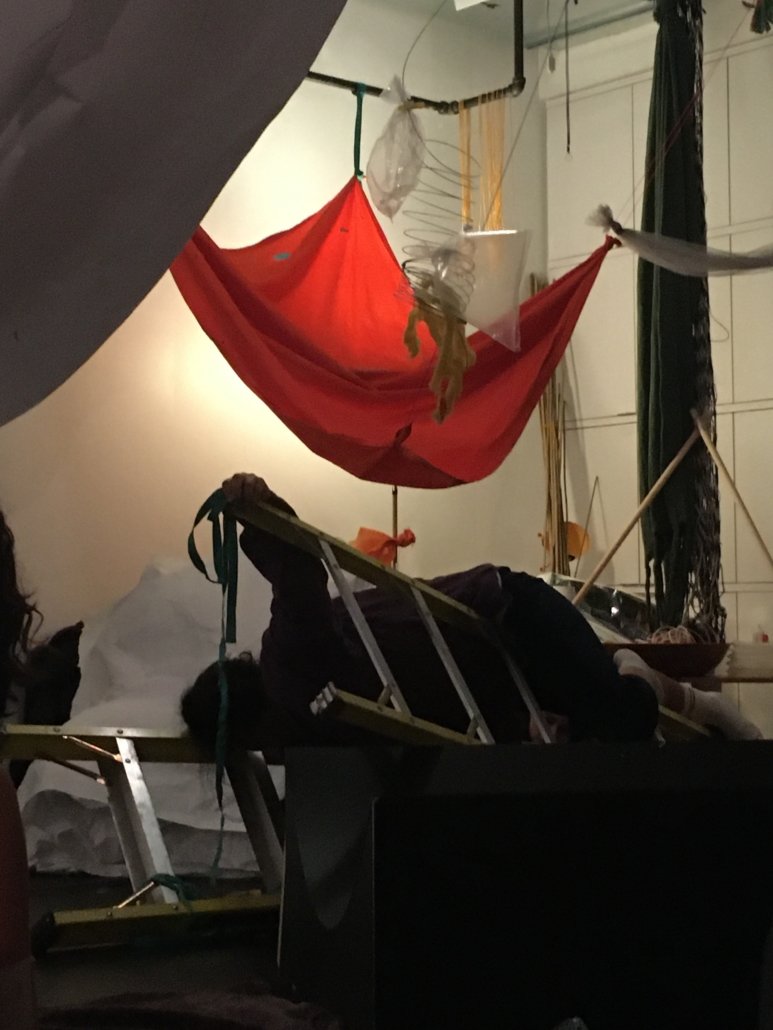
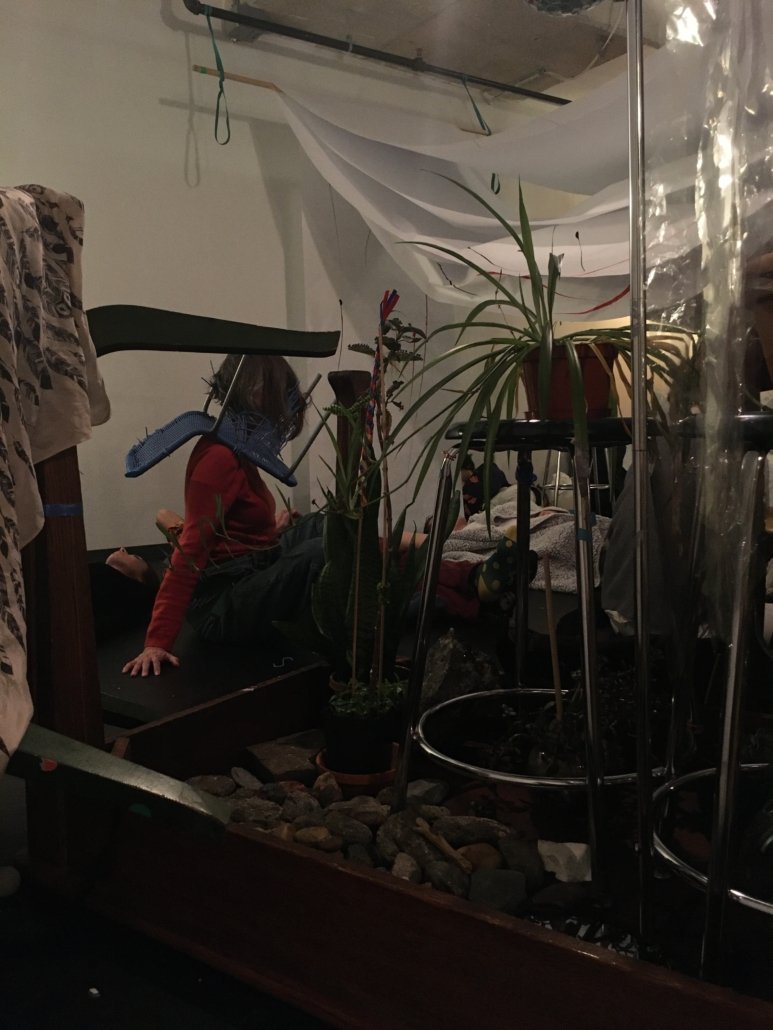
Photos by Emily Enhorning.

